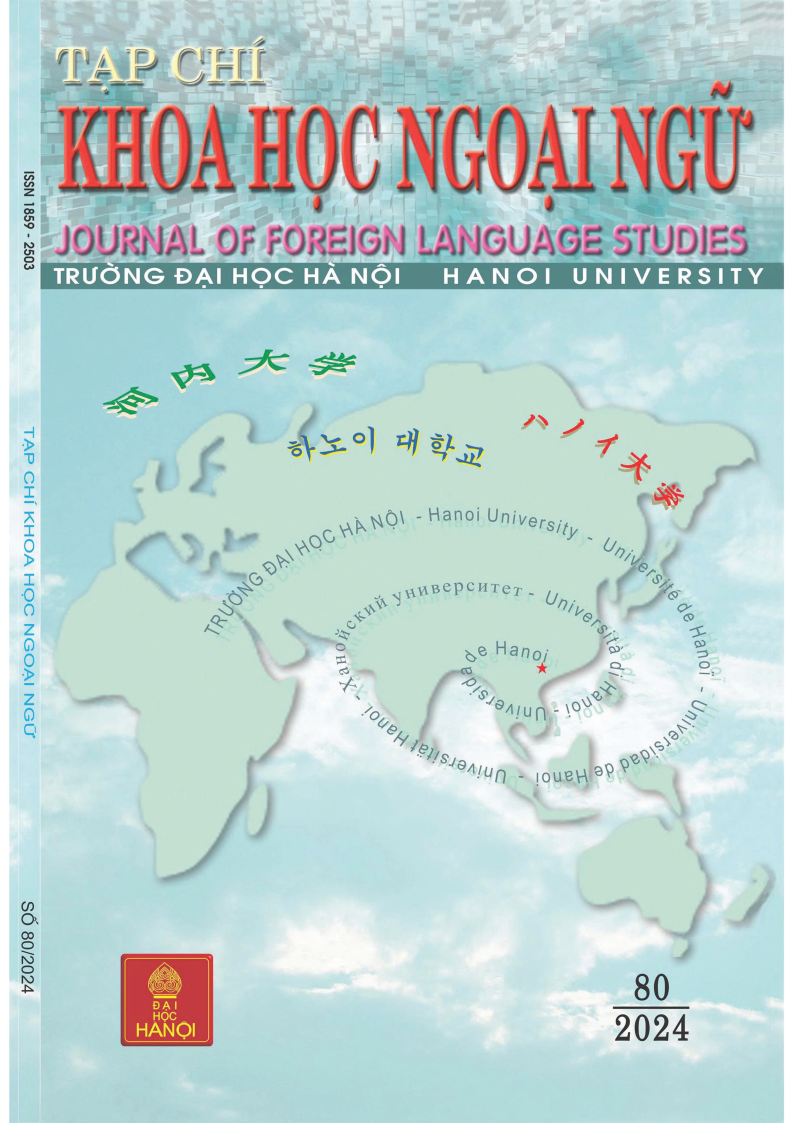A COMPARATIVE STUDY OF PATIENT-SUBJECT SENTENCES IN CHINESE AND THEIR VIETNAMESE EQUIVALENTS
DOI:
https://doi.org/10.56844/tckhnn.80.858Keywords:
Patient-subject sentence, cognitive semantics, transitivity, ChineseVietnamese comparisonAbstract
The unique syntactic structure of patient-subject sentences in Modern Chinese presents a significant challenge for Vietnamese learners. This study, grounded in the theoretical frameworks of Talmy's Force Dynamics, Peng Lizhen's modality theory, and Halliday's transitivity theory, employs a parallel corpus to conduct a comparative analysis of the constructional semantics of patient-subject sentences in Chinese and their Vietnamese counterparts – "de-transitive constructions." The findings reveal both structures primarily describe the subject's state while incorporating the speaker's subjective evaluation, encompassing epistemic, dynamic, and deontic modalities. The subjects in both structures are predominantly inanimate, definite, and generic entities, although animate, non-agent subjects also occur. In Chinese patient-subject sentences, the predicate can be either an action or a mental verb, often accompanied by a descriptive component. In contrast, the predicate in the corresponding Vietnamese structure is mainly an action verb, which may be bare, allowing for adding descriptive and subjective evaluation components and even including an agent. Furthermore, highly transitive patient-subject sentences in Chinese can correspond to other forms of expression in Vietnamese.






